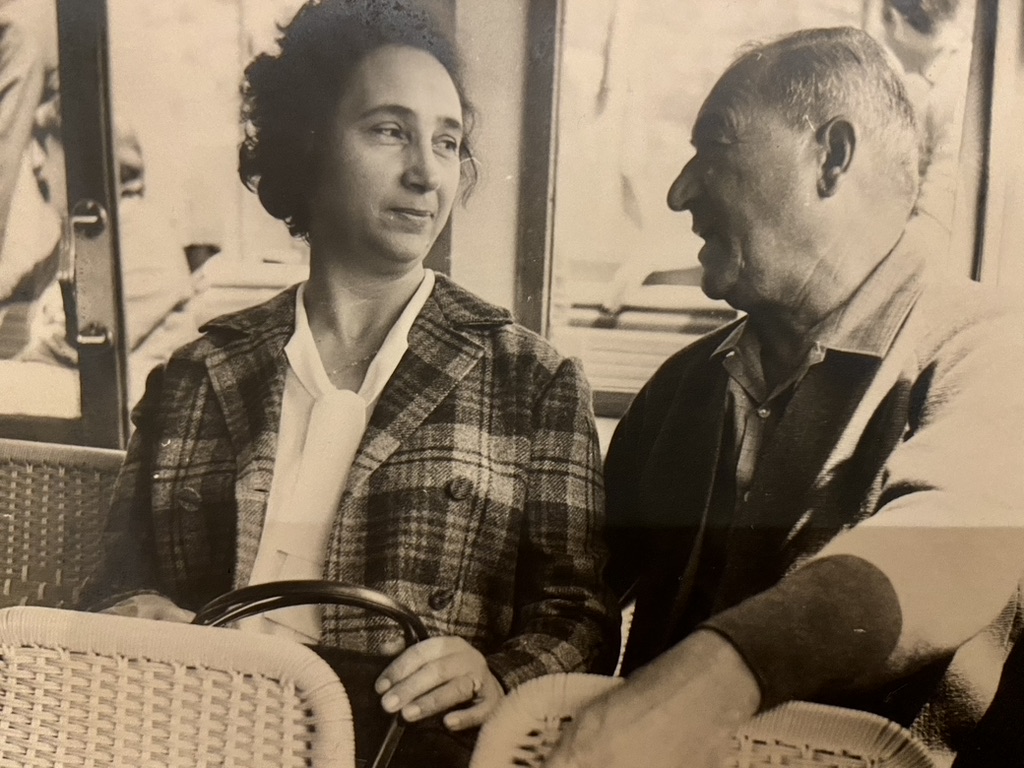In this blog I focus on the De Pieri and Corletto families who originated from the Veneto region. I’ve gathered the following information from Adelina Pavan nee De Pieri and Roberto De Pieri, the National Archives of Australia and a PhD thesis by
David Hugo about mica mines in the Harts Range, NT.[1]
Serafina De Pieri nee Corletto was born in Castelfranco Veneto in 1920. She was one of six children and both her father and grandfather had been shoemakers. The family also worked land. When she was 18 years old Serafina met her husband, Attilio De Pieri at a sagra or feast, and within a month they married and left for Australia. Serafina celebrated her 19th birthday on the boat.
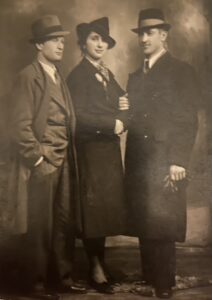
Attilio De Pieri was born in 1903 in Loreggia in the province of Padova. He migrated to Australia in 1927 and after a period of employment he went to work a mica mine in the Harts Range in the Northern Territory with other Veneto men. From about the 1930s to 1960 there were a series of mica mines run by Italians in the Harts Range located about 200 kilometres north-east of Alice Springs. Attilio was naturalised in 1937 and in 1939 he returned to Italy and one of the purposes of his visit was to find a suitable wife who would return with him to Australia.
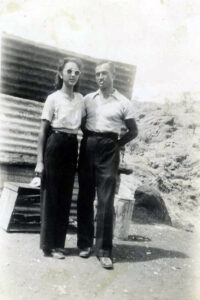
After they arrived in Australia, Attilio and Serafina went to live in a camp at the Billy Hughes mine and when she was interviewed by David Hugo she recalled the first night which improved once Attilio organised goat skins for the floor of the tent. The goat skins provided basic comfort particularly when children were born. The communal kitchens and storerooms were built of stone. The family worked in a couple of different camps and Attilio bought shares in one of the mines.
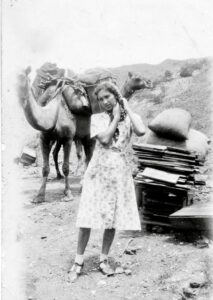
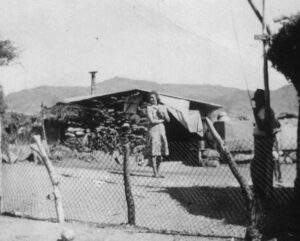
Living conditions were primitive in the camps. There was no electricity or running water although there was a spring near the camp and after some time, vegetables were planted. Serafina recalled:
When we have the bore, the men put some garden, we have grown lettuce, beans, peas, cauliflower, cabbage – not much but whatever we can do. (De Pieri, TS92 12, p. 8 and p 188 in the thesis)
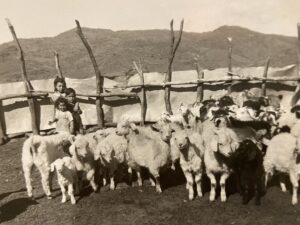
Adelina remembers that her father was able to grow watermelons in one camp because of access to water. She also recalls playing with the goats which were kept for milk and meat.
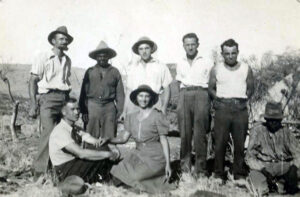
At one time Serafina was the only woman at the camp and she recalled in her interview that she did not see another white woman for seven months.
Serafina explained how she used her time on the camp:
. . . there was always plenty to do, you know, even though I was
there [Rex mine] on my own – the only woman. But I used to
cook for the men, there was about five men at the time, and I’d
prepare lunch and dinner, and make the bread. If I had any
spare time I ‘ d read or sew, so, you know – listen to the wireless.
(De Pieri TS92 12 p 6 – p202 of the thesis)
Attilio and Serafina returned to Adelaide for the birth of Adelina in 1942. Fred was born in 1944 and the family returned to Harts Ranges in 1945 with the two children. Attilio and Serafina lived and worked there until 1948 when the family returned to Adelaide. Roberto was born in 1950.


In Adelaide the De Pieri family lived in Currie Street in the west end of the city and Attilio worked from the front room of the house and repaired shoes. In 1948 Attilio sponsored his brother, Tullio and his wife Imelda who lived in Adelaide for about 20 years with their children, Anna and Luciano.
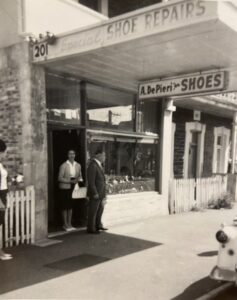
After leasing the house in Currie Street for ten years, Atillio and Serafina bought a house in Gilbert Street in the city in 1958. Attilio made this shop in the front room and he carried on selling and repairing shoes. He bought shoes from Slatters. In 1965 they moved to Malvern before they bought a house two years later at St Peters and enjoyed living in an area with more Italian people in the neighbourhood. Attilio died in 1973.
The Corletto family
Between 1939 when Serafina left Italy, and 1953, all members of her family migrated to Australia. They were sponsored by Serafina and Attilio and most of them stayed with the De Pieri family at Currie Street for the first months after arrival.
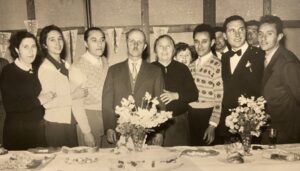
Teresina was the first to arrive with her husband, Guerino Santinon, and daughter, Milvia, in December 1948. They flew on one of the first planes to bring Italians to Australia. They went to the mica mines for a brief period before returning to live in Adelaide.
Lino arrived August 1949, aged 27 years (married Drusilla Fighera in February 1954 who had arrived June 1951 aged 26 years)
Orfeo arrived May 1950, aged 20 years. He returned to Italy in 1957 to assist his father to sell the family property in Castelfranco Veneto. At that time, he married Gina Milani and they returned to live in Adelaide.
Umberto arrived September 1950, aged 24 years (in April 1952, he married Maria Anna Panozzo who had arrived as a 15-year-old in March 1949)
Serafino (aged 31 years) arrived July 1953 with his wife Norma (aged 26 years) with their child, Gabriella, aged 3 years.
Riccardo and Babilla Trentin, the parents of Serafina, Teresina, Lino, Orfeo, Umberto and Serafino, were the last members of the family to come to Australia. They arrived in March 1954 and went to live with Orfeo and his wife, Gina, at Hindmarsh.
Serafina and the Veneto Club
After Attilio died in 1973, Serafina became involved with the Veneto Club in Adelaide. At first she played bocce for the Club.

Then Serafina became involved with the Club through several roles including coordinating the Women’s Committee and managing the kitchen for the popular Sunday night family dinner dances. Serafina was the first woman to be elected to the Committee. She was a committee member for six years before she was elected as Vice-President in 1984.
She was Vice-President of the Veneto Club for four years – again the first woman to have held that position.
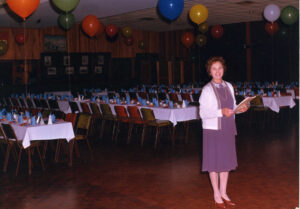
Serafina’s daughter, Adelina Pavan, remembers that her mother appreciated opportunities to offer her assistance because she loved mixing with people and she felt as though she was contributing to the growth of the Veneto Club in Adelaide. As a result of her involvement, and in recognition of her voluntary work, Serafina was nominated for the award, ‘The South Australian Italian of the Year’ in 1988.
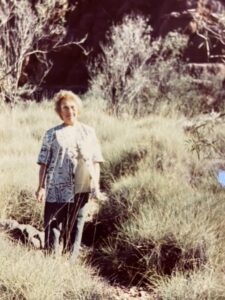
In 1995, Serafina was interviewed by David Hugo when he was researching for his PhD thesis on the Harts Range mica mines. She is quoted throughout the thesis and describes the operation of the mines and arrangements in the camps, relationships with Aboriginal men and women who assisted with work and the friendships with the miners and other Veneto women in the camps.
At that time in May 1995, Serafina’s daughter, Adelina and son, Fred, and other family members accompanied her to the site of the mines with David Hugo. Although not much was left at the camp site by that time, Serafina was able to point out the features and tell stories about her experience of being a young married woman living in remote Australia.
Serafina died in 2001 after a productive and happy life of 62 years in Australia.
Madeleine Regan
17 July 2022
All photos supplied by Adelina Pavan nee De Pieri and Roberto De Pieri.
[1] David Frederick Hugo, “Mica Mining at Harts Range, Central Australia, 1880s-1960: A Study of Ethnicity and the Impact of Isolation.” PhD thesis, Northern Territory University, 1995. https://ris.cdu.edu.au/ws/portalfiles/portal/23680670/Thesis_CDU_6115_Hugo_D.pdf
